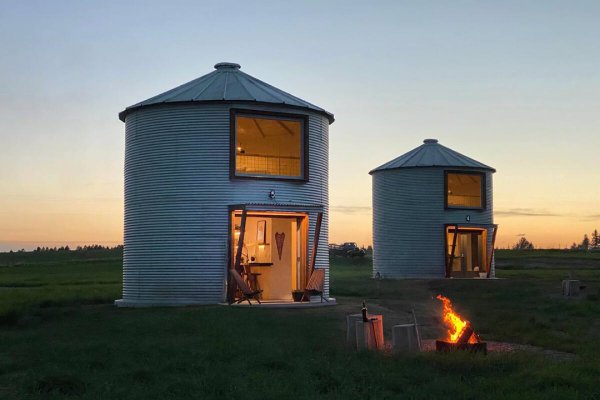Choosing the Right Glamping Unit for Your Property
When starting a glamping business, one of the first exciting choices you tend to consider is choosing which unit type(s) your venue will offer. From a creativity standpoint, this can be a very fun task, however once you dive into the specifics, it can quickly become overwhelming.
From tents to treehouses and everything between, it often feels like there are a million possibilities. Rest assured, you’re not wrong.
As I struggled with the numerous options myself, I found that by clearly defining the unit type options, I could more easily organize my thoughts and narrow down exactly what I was looking for.
So you guessed it – today we’re going to take a look at the range of glamping unit type options and review how they are currently performing in the marketplace. Let’s dive in!
Let’s add some structure
Below is how I’ve come to organize the various glamping unit type categories & subcategories. I’ve structured the unit options this way based on what each of the categories & subcategories have to offer. Of course, there is still a wealth of directions to go within each of these basic buckets, but at least it gives us a starting point.
Cabins
Modern Tiny Home
Traditional Wood or Log
Safari Tents / Wall Tents
Pole Framed
Timber Framed
Bell Tents
Camper Trailers
Airstream
Vintage
Other
Yurts
Teepees
Treehouses
Domes
Container Homes
Covered Wagons
Conestoga Wagon Co.®
Pods
Bubbles
Earthy Spaces
Cave
Mud Hut
Hobbit House
Retrofitted Nontraditional Lodging
People can be so dam clever when it comes to repurposing obscure objects, it made it a bit challenging to put a name to this category. I’ve used this as my catch-all for anything that has been reconstructed from its original purpose to use as a lodging accommodation. Take a look at the examples below and you’ll see what I mean.
Show me the numbers!
For this next section, I want to first give a huge shoutout to Sage Outdoor Advisory who, in partnership with Terramor Resorts, Cairn Consulting Group, and AirDNA, created a huge database for the US glamping market by surveying 231 glamping locations. Sage shared the following datapoints at The Glamping Show USA and promised that the full report will be available on their website before the end of 2022.
|
Glamping unit type |
% of Current Market Share |
Average Daily Rate |
Average # of Months in Operation per Year |
|
Cabin - Modern Tiny Home |
29% |
$253 |
11.3 |
|
Safari Tent – Timber Framed |
28% |
$423 |
6.7 |
|
Cabin – Wood or Log |
9% |
$284 |
9.9 |
|
Safari Tent – Pole Framed |
8% |
$280 |
7.9 |
|
Camper Trailer - Airstream |
7% |
$255 |
9.9 |
|
Bell Tent |
6% |
$155 |
6.9 |
|
Yurt |
4% |
$226 |
10.7 |
|
Tipi |
1.8% |
$270 |
7.9 |
|
Camper Trailer – Vintage/other |
1.8% |
$172 |
8.7 |
|
Covered Wagon |
1.7% |
$389 |
7.0 |
|
Treehouse |
1.6% |
$327 |
10.6 |
|
Dome |
0.9% |
$398 |
11.5 |
|
Average |
- |
$286 |
9.3 |
To me, data can tell a hell of a story. The first thing I noticed is that the glamping unit types that Sage identified do not include all of those I’ve listed above. Why? It means that that number of obscure units - think bubbles, caves, silos - are so rare that they do not warrant their own categories.
Next, when looking at the unit types that make up a small portion of the market share, we can see that they are able to charge a higher average daily rate (ADR) .
For example, take a look at domes. They occupy less than 1% of the market, but have the second highest ADR. Furthermore, dome structures are able to stay in operation on average of 11.5 months/year.
Of course, we cannot look at this glamping data in a vacuum. There are so many factors that affect a glamping venue’s ADR and average number of months in operation such as the property’s seasonal climate, proximity to off-site attractions, and on-site amenities.
To me, placing more context around the various glamping unit types and seeing how each performs allows me to consider my choices in a new light. I hope I was able to help shift your thinking as well.
“Am I wrong?”
I’d love your feedback on this!
Are there any glamping unit types or categories that I’ve missed? Do you think there is a better way to organize the options? Let me know in the comment section below!























